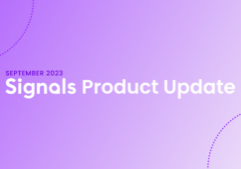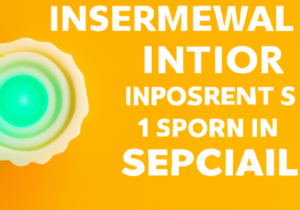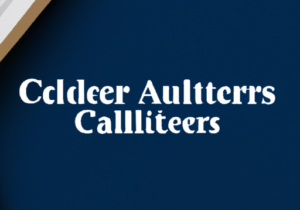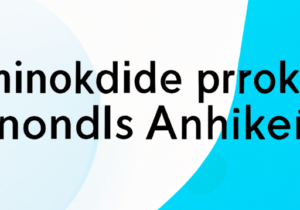Who doesn’t want to increase conversion rates of their bot? That sounds nice and all, but how exactly do we go about it? Well, in a recent podcast featuring the Engagement Specialist at Messenger Funnels, Alexys Bartok, she explains that the way to get your prospects converted is with intentional iteration. It all starts with the end and ends by going back to where you started. Confused? Here are four simple steps that will walk you through designing and improving your bot to get your conversion rates to the level you want them to be.
1. Draw a strategic map
Let’s start at square one. But to do so, you need to ask yourself: “What’s the end goal?” Starting with the end in mind allows you to remain focused on the purpose of your bot- to get customers to convert to your product/brand. So, before creating the bot, make a strategic map. This process is also known as making a chatbot decision tree. This guides the conversation from general questions to more specific, allowing the bot to close in on what your prospect really needs, while nudging them in the direction you want them to go.
Think of it like a road trip. It’s about the journey, not just the destination. If you want to take your prospects on this “journey,” the destination being conversion, then where do you want them to stop along the way? Consider what will make it most enjoyable for them, instead of just throwing an offer in their face.
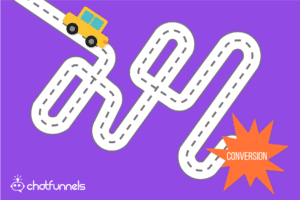
To sum it up:
- Decide what your conversion is.
- Choose what your prospect needs to get to the final destination of conversion, and help them arrive at those checkpoints along the way.
- Make a strategic map. This can be done on Google Drawings, Google Slides, Funnelytics, or whichever platform best fits the format you prefer.
2. Create a persona for your bot
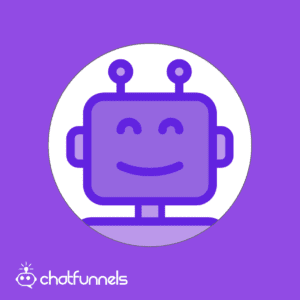
A crucial step in the bot making process is creating a persona for your bot. You can’t pretend that your bot is a real human, so make it fun! Base the bot’s persona off of the characteristics of your brand. Think of what will draw in your ideal client. As you write your copy, always keep in mind the bot’s “personality.” You want it to have a consistent voice. A solid persona will bring your bot to life, so to speak, and make it engaging for your prospects and clients.
You need to make the image of the bot’s persona as well. Every business uses something along these lines for branding. For example, Geiko has a gecko or McDonalds has Ronald Mcdonald the clown. When someone sees your bot’s persona, they should immediately think of your brand. Here at ChatFunnels, our bot is called the Funnel Bot, which links our bot to our company’s image.
3. Make your flow feel like a friendly conversation
Alexys brings up the point of simply making the flow like a conversation through text. In this day and age, that is what appeals to potential clients. Think of what a texting conversation is like. It’s simple and casual. That’s how you want the copy of your bot to be. Anything too formal or dry may deter prospects. I mean who would be engaged in any type of conversation if it feels one sided and disengaged?
What aspects make a copy like a friendly conversation?
- Well, one thing to incorporate is segmentation questions. The point is to just get a feel for what the prospect wants. Segmentation questions allow you, or better said, the bot, to guide the prospect along the journey that you’ve designed for them.
- Keep your copy short and sweet. Only include crucial information. Use the “one breath test.” If it takes more than one breath to read the question, its too lengthy.
- Aim for casual conversations. You want it to feel natural, so include texting jargon or even add emojis!
Keep in mind that although the goal is for everyone to buy, the reality is that some prospects may not buy yet, whatever their reasons may be. However, you can get them started on the journey. Help them initially feel comfortable and aligned with your brand. It’s all about the customer experience. You want them to walk away feeling it was enjoyable. If it’s not conversational, the prospect won’t be engaged.
4. Intentional Iteration
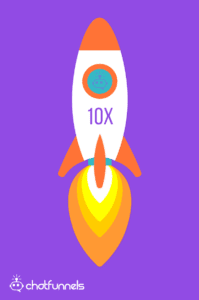
Okay, so now your bot is live, but the majority of your prospects are walking away. This is where intentional iteration comes into play. Its purpose is to improve your bot so that your conversion rates skyrocket!
“Iteration is a cyclic process of prototyping, testing, analyzing, and refinement.” What this means is that the bot wasn’t a failure per se, but you need to improve it. The strategic map is vital and helps us lay the groundwork, but the real focus is getting your bots launched. And once they’re up and running, don’t just leave it! Go in and tweak it.
Consider these four things to change or revise:
- Question order
- The copy
- Button options
- Adding different features
- Call to actions
It’s recommended to make only 2-4 changes per week and then see how those revisions play out.
Track Your Stats
Once you’ve gone through and fine tuned various aspects of your bot, you must track your stats. This includes split testing, also known as A/B testing. It allows you to compare what works best for your specific bot. Maybe you changed the wording of a question and want to see if the new question is more effective in getting the prospect to answer the call to action. You should compare the stats of both options to determine if the new question wording yielded better results.
Alexys Bartok shares how when she was iterating the bot of one of her clients, he was able to see his sales increase by tenfold! And it was an easy tweak. His call to action was a 30 day free trial of marital help. The question was originally posed as the generic “If your interested, click below.” Alexys came in and changed it to, “Are you ready to get help with your marriage?” Do you see how the revised question is much more engaging? This is the kind of stuff that makes all the difference!
The point is this: bots are never complete after the first launch. Intentional iteration is key!
Where to start
As we said in the beginning, start with the end in mind. There are a million things you can change with the bot, but remember what your end goal is- maximum conversion. It will be most efficient for you to start your intentional iteration with the call to actions if you want to see fast improvements.
The question you should be asking yourself is: “Can this call to action be more alluring?” You want it to be so captivating that the prospect can’t help but convert! Maybe you need to adjust how the call to action is presented. Amidst all the editing, make sure it’s staying true to the persona you created, though you are free to tweak that as well.
READ MORE
Start seeing your Buyers' signals
Signals is helping companies automate, grow, and close sales pipeline with industry-leading predictive intent scoring, lead generation, and real-time engagement.









